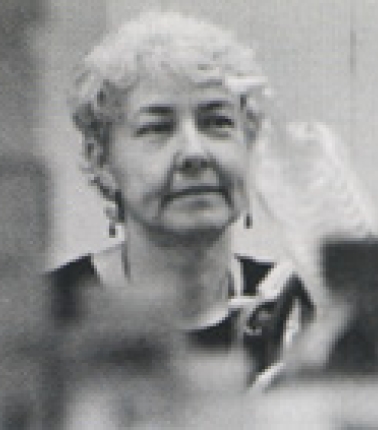
Departmental Affiliations
Research Interests
- Glycosylation
- dolichol
- site-occupancy
- molecular approaches
- research ethics
Experiences & Accomplishments
Glycosylation of asparagine residues of proteins in the secretory pathway of eukaryotic cells, N-linked glycosylation, is a complex process that utilizes a long-chain polyisoprenol lipid called dolichol. N-linked glycoproteins have from one to ten specific asparagine residues modified by oligosaccharides, the final structures of which are quite diverse. Examples of N-linked glycoproteins include cell-surface receptors, extracellular matrix proteins, intracellular organellar proteins, plasma proteins, and lumenal lysosomal proteins. The function of the glycan moiety on these proteins varies from protein to protein, and includes conferring resistance to proteolysis, conferring solubility, facilitating correct folding and oligomerization, being a recognition marker in molecular interactions, being a recognition marker in cell targeting, and being important for the activity of the glycoprotein. N-linked glycosylation is essential for cellular and organismal viability. Although the final structures of the oligosaccharides attached to asparagine residues are different, the synthesis of all N-linked glycoproteins has common steps including the synthesis of dolichol, which is the carrier of mono- and oligosaccharides, the assembly of the oligosaccharide-lipid, the transfer of the oligosaccharide from the lipid to the asparagine residue of nascent proteins being translocated through the endoplasmic reticular membrane, and the utilization of the oligosaccharide in protein folding and oligomerization. My laboratory studies the common steps of N-linked glycosylation, using the approach of isolation and identification of mutants defective in these common steps. These mutants are then utilized for metabolic labeling studies, for isolation of cDNAs for various enzymes in the pathway, for structure/function studies, and for understanding the biological effects of glycosylation defects.
(Although Dr. Krag is not accepting students she will remain as a consulting faculty for the training program).
Select Publications
Krag, S.S. The importance of being dolichol. Biochem. Biophys. Res. Comm. 243, 1 - 5. (1998) Invited contribution to the Views and Breakthroughs Section.
-
Pu, L., Scocca, J.R., Walker, B.K., and Krag, S.S. The divergent 5’ ends of DPM2 MRNAs originate from the alternative splicing of two adjacent introns: characterization of the hamster DPM2 gene. Biochem. Biophys. Res. Comm. 312, 555-561. (2003)
-
Pu, L., Scocca, J.R., Walker, B.K., and Krag, S.S. A single point mutation resulting in an adversely reduced expression of DPM2 in the Lec15.1 cells. Biochem. Biophys. Res. Comm. 817-824. (2003)
-
Acosta-Serrano, A., O'Rear, J., Quellhorst, G., Lee, S-H., Hwa K-Y., Krag, S.S., Englund, P.T. Defects in the N-Linked Oligosaccharide Biosynthetic Pathway in a Trypanosoma brucei Glycosylation Mutant. Eukaryotic Cell, 255-263. (2004)
-
J. Jones, K. Viswanathan, S. Krag, M.J. Betenbaugh. Polyprenyl Lipid Synthesis in Mammalian Cells Expressing Human cis-Prenyl Transferase. Biochem. Biophys. Res. Commun.331, 379-383. (2005)
